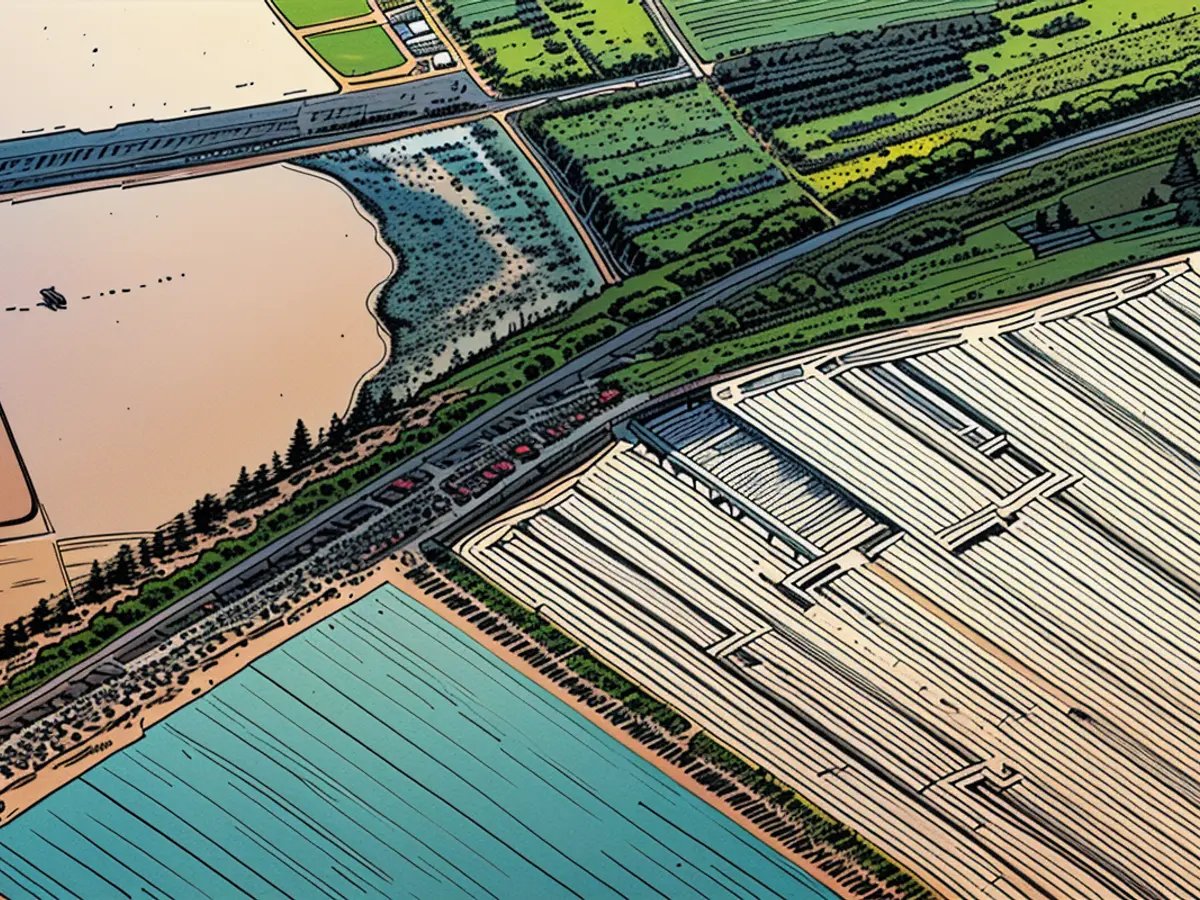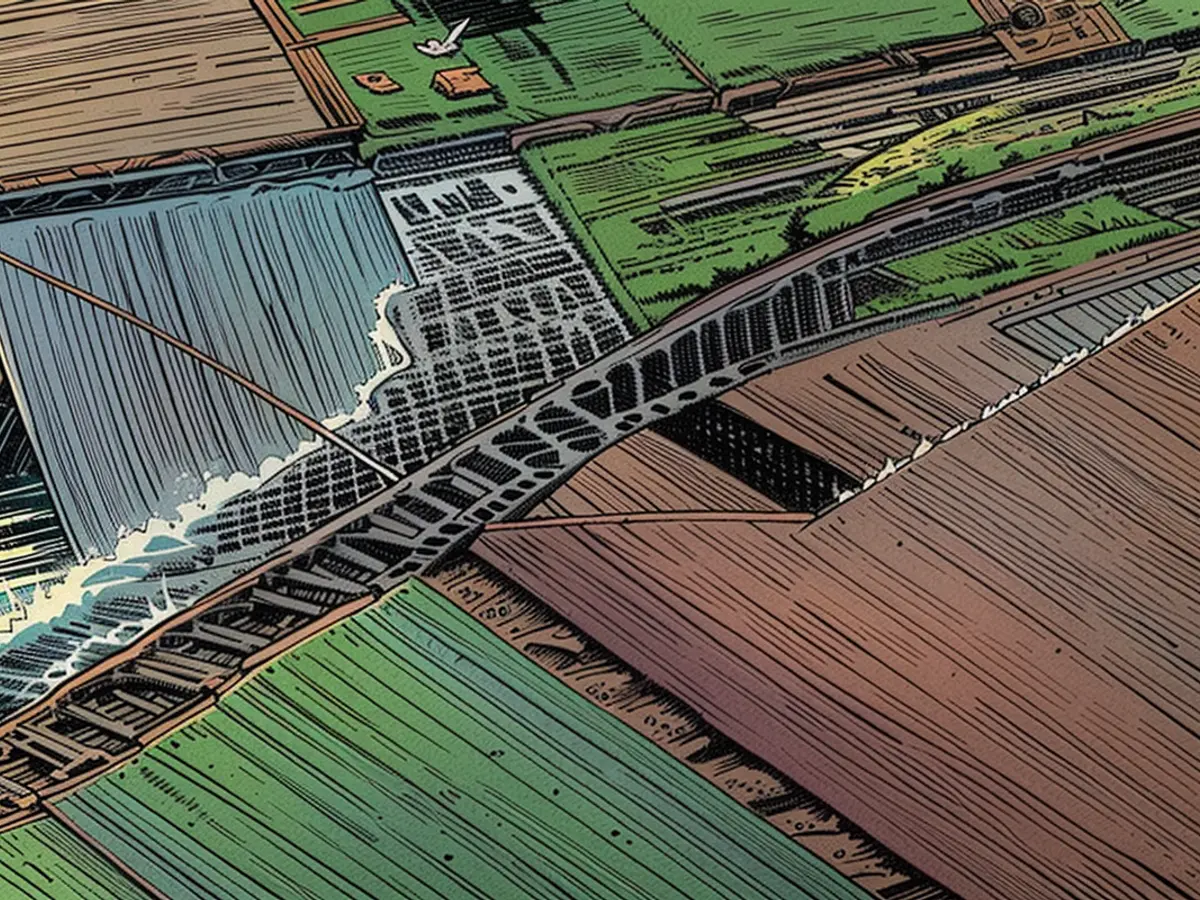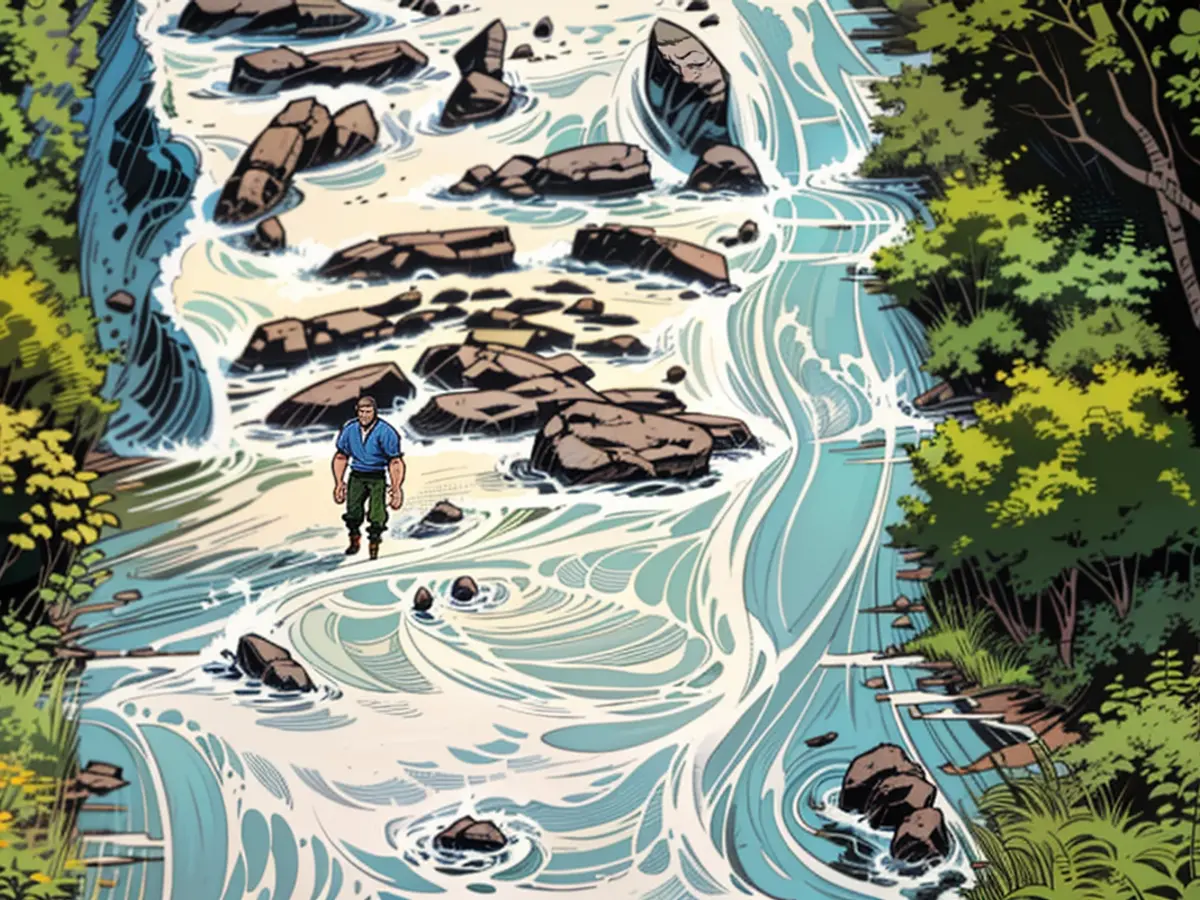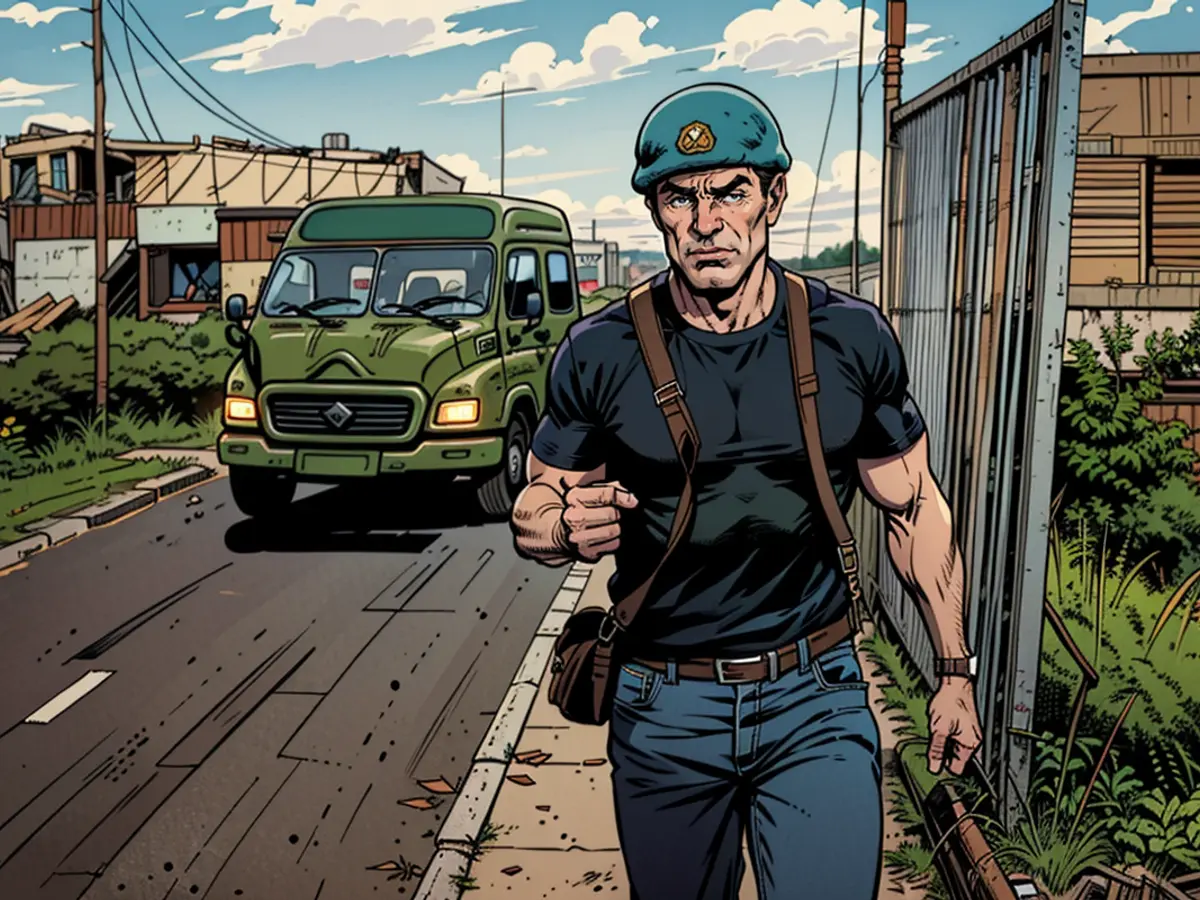Ukraine waged an unexpected offensive against southern Russia, dramatically shifting the dynamics of the conflict.
US authorities informed CNN that Russia has relocated countless troops from occupied Ukrainian territories to deal with the impending threat. Amidst this, Russian President Vladimir Putin was compelled to recruit conscripts, going back on his commitment not to utilize them on the frontline.
A substantial trench has been dug across the countryside nearby Selektsionnyi town, approximately 45 kilometers (around 28 miles) from the border, in Kursk, as per satellite imagery. Various job postings for trench diggers have surfaced online, with one guaranteeing weekly payment.
Ukrainian forces’ audacious attempt to breach Russia's border, planned in complete secrecy, took even Kyiv's closest allies, including the United States, by surprise. This action has allegedly altered the dynamics of a war that has persisted for more than two years.
Despite being on the defensive for months, losing territory in protracted battles, the Ukrainians managed to outmaneuver Moscow and infiltrate Russian soil.
The operation's success can be attributed to airtight operational security. Not a single detail about the operation was leaked, making the troops' movements appear like a military exercise or defensive reinforcement.
Natia Seskuria, an associate fellow at the UK's Royal United Services Institute for Defense and Security Studies (RUSI), commented on this, stating, "Ukraine has demonstrated that it can carry out such a secretive and significant operation successfully, they can penetrate Russian territory, and they are still committed to fighting for their country, displaying an absence of war fatigue and the willingness to take extreme measures to defend their nation."
The Ukrainian forces amassed clandestinely under the cover of dense summer foliage along rural roads in the Sumy region, in northeast Ukraine. Experienced and battle-hardened units were deployed or redirected from different regions. For instance, the 82nd Air Assault Brigade, which was previously engaged in nearby Kharkiv, was diverted to breach the border, based on multiple videos and social media accounts.
Ukrainian intelligence meticulously studied the readiness and capabilities of Russian units on the border, as well as the number of impediments, including minefields and tank traps, they would encounter. The obstacles were minimal.
The geographical knowledge of the area enabled Ukrainian forces to launch their attack, utilizing forest belts for cover and roads for speed. Commanders were informed of the mission only in the last few days prior to the incursion.
The key to Ukraine's success was their ability to penetrate Russian territory effortlessly with minimal resistance, catching the Russians off guard. This demonstrates the failure of Russia's intelligence services in anticipating the Ukrainian incursion into the region, according to Seskuria.
Ukrainian troops targeted weak points in Russian defenses, initially storming into Kursk on August 6 in the afternoon. Videos on social media, geolocated by CNN, show dozens of Russian soldiers surrendering at the border crossing south-west of Sudzha town, located 105 kilometers (65 miles) southwest of Kursk city.

Serhii Sternenko, a Ukrainian vlogger, shared video of at least 22 Russian soldiers surrendering in the Kursk region on his Twitter and Telegram channels. CNN could not confirm the identities of those shown in the footage.
Ukrainian President Volodymyr Zelensky confirmed on Thursday that Ukrainian forces had taken control of Sudzha, an important transit point for gas supplies from Russia to Europe via Ukraine. Satellite images showed a gas terminal at a nearby border point in ruins.
In their march across the border, Ukrainian forces employed fast, resilient western-made armored vehicles: Strykers and Marders. Mobile groups of special forces swiftly spread out to various locations, as the Russian military grappled to determine the scale of the assault.
Crucial to their success were air defenses, supportive artillery, and jamming to hinder Russian military communication. Thermal protection for their body armor also helped soldiers evade heat-detecting drones.
Within hours of crossing the border, Ukrainian forces were close to Sudzha. Many of the town's inhabitants were forced to flee in hasty escapes, cursing the Russian military for abandoning them.
During the operation, Ukrainian soldiers posted videos of themselves in front of village signs before disappearing, part of a parallel campaign of psychological warfare.
CNN geolocated numerous videos showing Ukrainian forces posing in front of road signs and removing Russian flags from village halls across the Kursk region, including Porozovsky, Plekhovo, Sverdlikovo, Guyevo, and Sudzha.
Seskuria, from RUSI, acknowledged the significance of these images and videos as "a great boost in morale for the Ukrainians." Instead of confronting Russian units head-on, advanced Ukrainian units circumvented them, isolating them, leaving the Russian military struggling to pinpoint the source of the threat.
Simultaneously, the Ukrainians kept an eye on Russian reinforcements, annihilating a caravan of 14 Russian military vehicles close to Rylsk using a missile strike. Social mediaposts, which CNN pinpointed to the town of Oktyabr’skoe in the Kursk region, presented visuals of the charred corpses of Russian soldiers in damaged and burned-out automobiles scattered along a stretch of road.
Footage revealed burned out vehicles in Oktyabr’skoe, Kursk. Ukraine's military chief, Oleksandr Syrskyi, announced on Thursday that Ukrainian forces had conquered 1,150 square kilometers (around 444 square miles) of terrain and 82 settlements since the commencement of the sudden attack.

Trenches, west of Lgov, Russia Maxar Technologies
More than seven days after the attack, the Ukrainians were still scouting vulnerabilities, fortifying their dominion over a swath of terrain 35 kilometers (approximately 22 miles) deep – even supplying emergency food assistance to Russian civilians.
The incursion has given Ukraine control over a Russian civilian populace. Seskuria informs CNN that Ukraine’s invasion is partially a “self-defense measure ... because the Kursk region, due to its location, has been utilized frequently to launch missiles on Ukrainian territory.”
“Ukraine’s objective would be to shift Russian forces away from offensive operations in the Donetsk oblast, where Russians have made gains in recent months... this would be an obvious intention, to lessen the military pressure in Ukraine.”
Seskuria further mentioned that Ukraine’s recent actions might afford Ukraine “a stronger bargaining position when it comes to any kind of peace talks in the future.” Indeed, Mykhailo Podolyak, an aide to Zelensky, stated that the incursion was aimed at urging Russia to engage in a “fair negotiation process.”
Russian military bloggers are furious about the absence of readiness and the tardy response to the incursion.
The Russian Defense Ministry advocated this week that it was repelling Ukrainian advances and taking captives, but Russia’s reinforcements were grappling to reclaim territory, outsmarted and struck by missiles and artillery.
Can Kasapoğlu, a defense analyst at the Hudson Institute, a Washington, D.C.–based think tank, told CNN he did not foresee a Ukrainian withdrawal imminently.
“The offensive is peaking, and the battlefield is solidifying. Nonetheless, the Ukrainian military has already secured operational depth. If they can establish sturdy defensive positions ... they can remain inside Russian territory for a considerable period of time,” he said.
Kursk would be Ukraine’s “crowning achievement” when negotiating an end to the conflict, Kasapoğlu added, if Kyiv is successful in maintaining control of the seized territory.
Lizzy Yee, Paul Murphy, Avery Schmitz and Isaac Yee contributed reporting.

In light of Ukraine's successful incursion into Russian territory, international relations might be significantly affected. The seizure of Sudzha, an important transit point for gas supplies from Russia to Europe via Ukraine, could influence the energy market on a global scale.
Moreover, Europe's collective response to this geopolitical shift could shape its relationship with Russia, potentially leading to new alliances or increased diplomacy to maintain stability in the region.







